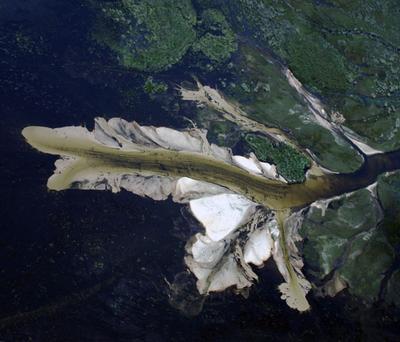Okavango Delta in Africa

Okavango Delta in Africa
Okavango Delta in the North-East of Botswana - an oasis in one of the last undeveloped corners of Africa.
The Central part of the Kalahari desert intersects very few roads, which are often just a rut. The nearest major airport is located abroad, in Zambia, in Livingstone, approximately in 300 km on the North-East of the Delta
The river Okavango arises on the uplands of Angola and flows to the east but before she manages to reach the ocean, it vanishes in the arid Kalahari Desert in Botswana, in one of the driest places of South Africa. Water flows very slowly and forms the wide internal delta, covering the area about 16000 sq.km. which during flood after rains can reach 22000 sq.km. Slowly current water passes on a labyrinth of channels, in its which more than 95% evaporate. The remains of water go or to the south and pass 150 km. down the river Boteti before reaching Makgadikgadi's saline soils (the largest saline soils in the world) where they gradually evaporate, or on the southwest where they eventually join Ngami's lake.
The delta of Okavango not only represents the internal delta greatest in the world; unique character of this area gives also collision of extremely fertile bogs and the arid lands of the Kalahari Desert. Even on such huge continent as Africa, the delta of Okavango represents one of the largest untouched regions.
The delta became a shelter for various plants and animals. The top part of the delta is covered with dense thickets of a reed in which the papyrus dominates. Right there the sites which have been constantly covered with water where the set of water-lilies grows meet, and there live the dwarfish geese, eating almost exclusively delta fruits. This marshy environment is ideally suited for various animals, including a hippopotamus, a crocodile and several species of antelopes. From them it is especially remarkable ситатунга, adapted to life among water and living mainly in the most impassable areas of the delta of Okavango and in other similar regions of Africa. Other family of antelopes which was even more specific to South Africa, too adapted to the water environment - the water goats presented by a marsh goat, to a bunch also treat. The delta of Okavango shows the biggest concentration red treat, here, on the flooded meadows, them at least 20000 individuals live.
Thickets of a reed and sites of open water sheltered a large number of various birds, including some the most rare African types. In these parts the picturesque African kite fisher, with his unforgettable shrill shout, and along with it and other types, in particular, the bee-eater, an emerald halcyon, some species of a heron and a white heron and the African fish owl hunts.
In lower reaches of the delta of Okavango of a thicket of a reed give way to prickly thickets of an acacia and inundated meadows which as a magnet attract wandering herds of steppe animals, such as zebras, buffalo s, elephants and antelopes. Among the predators coming after these herds, - lions, leopards and hyenas. On grassy plains there live local tribes тсвана and хереро, traditionally engaged in cattle breeding. In the past their cattle was grazed only at the edges of the delta because of the dangers connected with a fly a tse-ets - a carrier of a sleepy illness. Delta spraying from air practically eradicated in recent years this most dangerous insect, having allowed shepherds to get with the herds into depth of earlier inaccessible bogs; it, however, led to reduction of number of antelopes because of invasion into their habitat of the livestock applying for pastures. Thus, the quantity of antelopes is reduced also fragile balance unaffected by the person of the world it appears under the threat. This danger was noticed by inhabitants of this district, and Moremi of 3885 sq.km. wildlife area became the reserve of the wild nature organized and operated by local population first in South Africa.
Subscribe to our "Unbelievable Facts" Newsletter
Go back to homepage of Fun-Interesting-Facts.com - Submit your own facts













